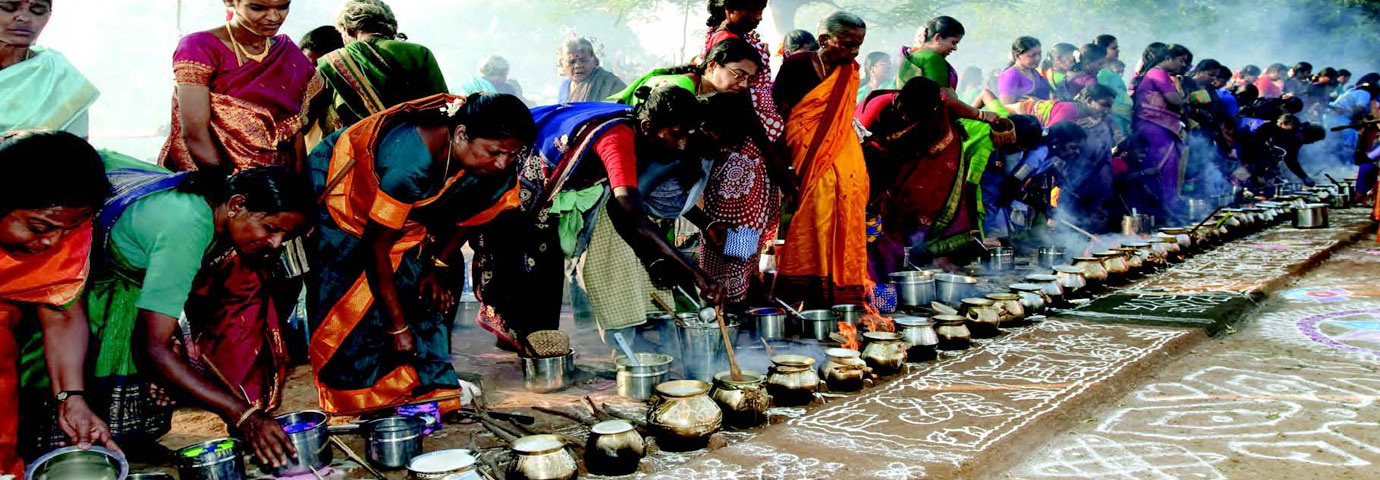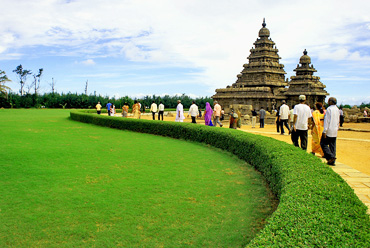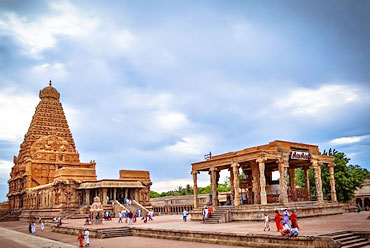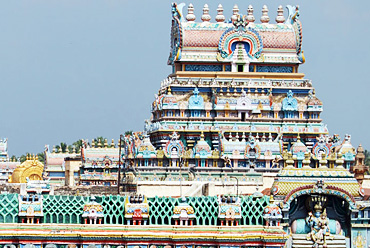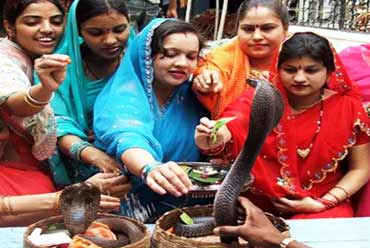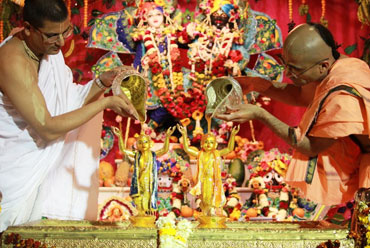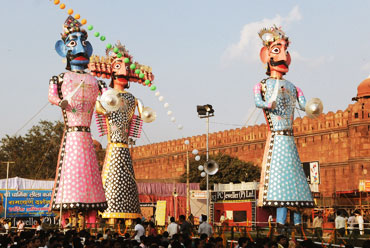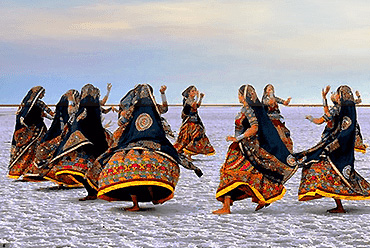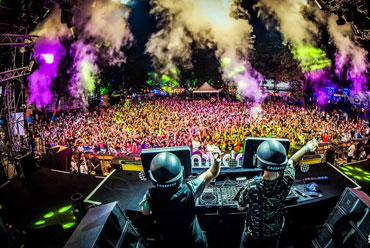When the harvest is over, the people of Tamil Nadu express their gratitude to the gods, the earth and their cattle. For four days, they celebrate with abandon and worship with devotion. Pongal, the harvest festival in mid-January is a very important one in Tamil Nadu.
Pongal festivities continue through the first four days of the Tamil month of Thai (mid-January to mid-February). The houses are cleaned, painted and decorated. People wear new clothes and the cattle are gaily caparisoned with beads, bells and flowers-their horns painted and capped with gleaming metals.
Time of The Year
Pongal falls in mid-January, at the beginning if Thai, which is a month of hope and joy and is considered very auspicious for marriages As a Tamil saying goes, "When Thai is born, it paves the way for hope." The month prior to Thai is Margazhi, considered inauspicious as it symbolizes the death of the sun as it journeys to the winter solstice. It is, however, believed that if a young unmarried woman offers prayers daily before dawn, the Gods would bless her with a suitable husband.
Celebrations
Though more popular in the rural areas, it is celebrated with the same gusto and fervor by the urban population too and the preparations are quite elaborate.One can notice beautiful Kolams (decorative patterns made on the floor with rice flour) gracing the entrance of most houses. Kolams are generally drawn, traditionally speaking, with rice flour, the idea being that insects would feed on it and bless the household. The kolam also bore sociological significance and is even today religiously performed as a threshold ceremony before dawn in traditional households. Today, the kolam serves decorative purposes, and therefore almost no one takes the pain to draw it with rice flour. Instead, substitutes that can make instant kolams are popularly used.
At the center of the Kolam is a lump of cow-dung, which holds a five-petalled pumpkin flower-a symbol of fertility and an offering of love to the presiding deity. However, one thing that distracts from the solemnity of the festival is the film music blaring out of microphones.Major festivals in the south are irrevocably linked to the buying of new clothes and the preparing of sweets and other delicacies. The shops are flooded with new things begging to be bought. For women, it is a must to put flowers in their hair, as this is considered auspicious.Several community events like bullfight and bird fights are organized and community dinners made from the newly harvested crop are enjoyed by all.
Rituals
All the four days of Pongal have their own significance as separate deities are worshipped each day. On the first day, Bhogi or the Rain God is worshipped. The day begins with a til oil bath and in the evening there is a bonfire in which all the rubbish in the house is burnt.
The second day is that of the Surya Pongal. The place where the Pongal puja is to be done, usually the courtyard or open terrace, is washed a day prior to the festival, smeared with cow-dung, and left to dry. Pretty kolams are drawn, which are special to the occasion. At the place where the puja is to be performed, a delicious concoction of rice, moong dal, jaggery and milk is cooked in a new earthenware pot on an open fire. But before that, some fresh ginger is tied around the pot. As the Pongal boils over and spills out of the pot, children waiting for this go around the pot, clapping their hands and crying "Pongalo Pongal". Once the Pongal is ready, it is tempered with cashew nuts and raisins fried in ghee.
The Pongal is offered, on a new banana leaf along with other traditional delicacies like Vadas, and payasam, to the Sun God in gratitude for bestowing his blessings on the land and the harvest. Sugarcane, grain, sweet potatoes etc. are also offered.
The third day is that of the cattle worship or Mattu Pongal. On this day, the cattle are caparisoned and paraded in the village after they have been offered the Pongal. The fourth and final day marks the KanyaPongal, when birds are worshipped. Major attractions of this day are bull and bird fights.
The Sankranti Rath (chariot) is a typical Pongal kolam. Earlier, the ropes of the rath were kept open till the day after Pongal, when all were "joined" from house to house symbolizing a collective desire to realize an uninterrupted cosmic cycle. Today, no one has the time or inclination to be quite so ritualistic and patterns are confined to houses and the immediate area outside it.
Legends
Though several legends are connected to the celebration of Pongal, the most popular is the one connected to the first day, when the Rain God, Bhogi or Indran, is worshipped. It is believed that on this day, Lord Krishna lifted the Govardhan Mountain on his little finger to shelter his people and save them from being washed away by the rains and floods.
Regional Celebrations
This festival is celebrated all over India on the same day, but has different names in each region. However, being a harvest festival, bonfires and feasts are the main thing common to all the celebrations of this festival. In northern India, the festival is known as Lohri while in Assam it is called Bhogali Bihu, in Uttar Pradesh and Bihar it is known as Sankranti, and in Andhra Pradesh it is celebrated as Bhogi, when each household puts on display its collection of dolls.
Places To Visit
Undoubtedly, Tamil Nadu would be the best place to visit during the time of this festival. Four days filled with joy and festivity can be witnessed in the entire state.

